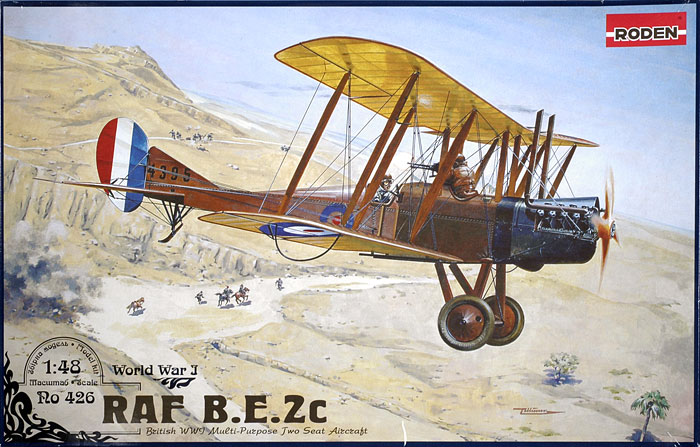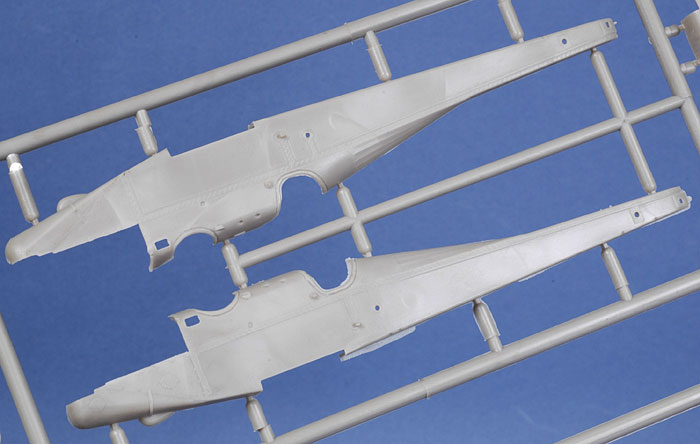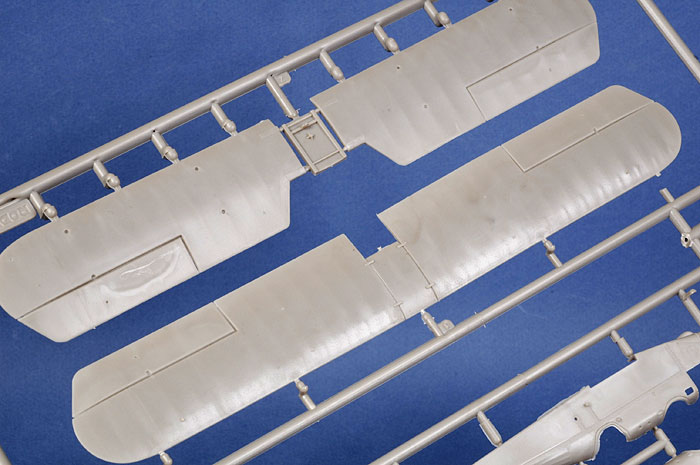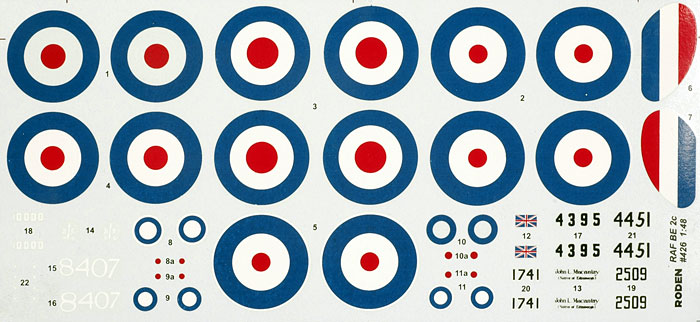|
RAF B.E.2c

Roden, 1/48 scale
S
u m m a r y
|
| Catalogue Number: |
Roden RAF BE2c kit #426 |
| Scale: |
1/48 |
| Contents and Media: |
Over 150 parts; markings for
six aircraft. |
| Price: |
Around AUD$40.00, available
worldwide from specialist hobby
retailers worldwide. |
| Review Type: |
FirstLook |
| Advantages: |
Sensible breakdown of parts,
excellent detail, superb one piece wings with sharp trailing edges and
subtle rib detai |
| Disadvantages: |
Decals out of register |
| Recommendation: |
Highly Recommended |
Reviewed by
Rob Baumgartner

HyperScale is proudly supported by Squadron.com
Reconnaissance and observation duties call for a
stable platform so that the crew can efficiently perform their tasks.
Edward Busk came up with a design that fulfilled these requirements, and
thus the BE2 series of aircraft was born.
It performed this role admirably but later in the
war when faced with fighter opposition, these very characteristics were
a hindrance. Early war scouts such as the Fokker monoplane and
fledgling Albatros Scouts, made easy prey of the slow maneuvering BE2.
Eventually the type was taken out of front line
service and used in nocturnal operations. In an environment of darkness
where the pilot doesn’t want to be distracted with flying the aircraft,
the BE2c performed admirably.
Roden is renowned for the finesse of their
mouldings and this kit is no exception. Five
sprues contain over 150 parts, which is not surprising as this is quite
a large aircraft.
Ian Stair had a set of plans published in the 1993
“Datafile” on the subject and these were used for comparison with the
kit parts. The outlines of both wing and fuselage are excellent and a
check of the smaller parts also confirmed this attention to detail.
Upon opening the instructions, one is immediately
struck by what has become a hallmark of this manufacturer…the engine.
This little gem is comprised of 15 parts and the detail is commendable.
The kit depicts the later build aircraft as
evidenced by the 90hp RAF 1a V-8 engine. Other features in common with
this vintage are the central cut-out in the upper wing and “vee” shaped
under carriage, all of which are portrayed in the kit.
Both early and late tail fins are also included
which greatly increases the choice of machine you wish to represent.

Click
the thumbnails below to view larger images:
[../../../photogallery/photo00016933/real.htm]
Fuselage
Thankfully the fuselage halves are in single
lengths which will eliminate any fit and alignment problems. It was a
frequent occurrence for the fabric to wrinkle on these aircraft but
Roden have resisted the temptation to try and replicate this.
To help spruce up the interior, a basic depiction
of the internal structure can be found moulded
inside the fuselage halves. Into this, the usual kit supplied items can
be added, such as the seat, rudder, control column, hand pump and
instrument panel.
There is plenty more to be seen in this area which
gives the scratch builder a chance to excel. Thanks to surviving
examples of the real aircraft, reference material should not be an
issue.
Wings
The upper and lower wings are in one piece which
means that there will be no problems setting the dihedral. Both items
were beautifully rendered with sharp trailing edges and restrained rib
detail.
Although the ailerons are not featured as separate
items, the demarcation lines are sufficiently deep to give the correct
impression. Cutting the inboard join will easily allow the part to be
bent for those wanting to animate the control surfaces.

In the quest for moulding
efficiency, the eagle eyed viewer will notice Roden’s very slight
cord-wise seam near each wing tip. This is no problem though as these
are easily removed with wet and dry…if you can see them!
Extras
Ordinance is in the form of the expected machine
guns but an added bonus is the inclusion of eight small bombs and a set
of Le Prieur rockets.
An acetate sheet gives the builder the necessary
transparencies for the windscreen as well as a selection of covers for
the many openings found on the fuselage.
The rigging on the BE2 is a complicated affair so
it’s pleasing that Roden provide the modeler with a three dimensional
rigging diagram. For a more realistic impression of the layout, the box
top can be used to confirm the placement of these wires.
Marking Options
As usual the modeler is blessed with an excellent
variety of options to choose from. Six aircraft are presented on the
decal sheet with each one offering an interesting choice of subject.
The printing looks good with each item sharply
defined and possessing healthy colour density.

Unfortunately registration problems still plague
Roden. In this case it was the outer white ring of the roundel. For the
modeler that desires a competent finish, this limits the number of “out
of the box” finishes to four.
- RAF BE2c “4395” No. 14 Squadron RFC
(Expeditionary Forces) 1917.
The Strange mount for the
Lewis gun is the dominant feature of this aircraft that found its way to
Arabia. At some stage in its life it crashed and was extensively
damaged.
- RAF BE2c “10000” RNAS Observer’s School, July
1917.
This Blackburn-built BE2c
was the only British aircraft to have a 5 digit serial number. After
crashing at Eastchurch it was erased from the books in August 1917.
- RAF BE2c “1741” No. 12 Squadron RFC, France,
1917.
This aircraft was shot
down 4 months after being delivered to the above Sqn. It was repaired
and while at Farnborough, had a Lewis gun fitted on an experimental
mounting. After returning to France, it was struck off the books when
wrecked on March 1 1916.
- RAF BE2c “2509” No. 2 Squadron RFC 1916.
There were quite a few
presentation aircraft to be found in WWI. This one being paid for by
Mrs. H.P. Stromberg.
- RAF BE2c “8407” based at Cranwell, 1918.
Sporting bombs and Le
Prieur rockets, this aircraft was delivered RNAS East Fortune in
December 1916. In September 1918, after being transferred to Cranwell
earlier in the year, it managed crash by spinning into the ground.
- RAF BE2c “4451” Grain, 1917.
This was an aircraft
built by G & J Weir and was unusual in having a gravity tank under the
top port wing. Roden cater for this with the appropriate part in the
kit.
In the past, two-seaters have been generally
neglected by main stream manufacturers. Thankfully this has changed in
recent years and the BE2 series is finally getting the treatment it
deserves.
This kit has not been over-engineered and as a
result, is quite easy to build. The rigging may frighten the beginner to
WWI aircraft but a methodical approach will prevail.
The only other thing the modeler needs to be aware
of is that there were a large number of manufacturers that produced the
BE2c. The result was many subtle differences between individual machines
so choose your aircraft carefully if deviating from the norm.
All in all, this is an excellent offering and,
decal problems aside, the kit still deserves its highly recommended
status.
Highly Recommended.
Thanks to
J.B.
Wholesalers for the sample
Review Text Copyright © 2007 by Rob Baumgartner
Images Copyright © 2007 by Brett Green
Page Created 04 September, 2007
Last updated 24 December, 2007
Back to HyperScale Main Page
Back to Reviews Page
|
Home
| What's New |
Features |
Gallery |
Reviews |
Reference |
Forum |